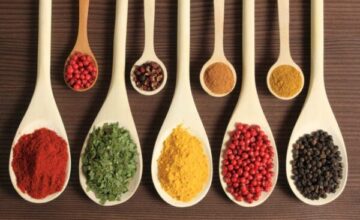
South African cuisine is a blend of the country’s regional dishes.
Various ethnic groups like Zulu, Xhosa, and Cape Malay have enhanced it with their delicious preparations.
Amidst outside influences, French and Indian play an essential role. Be it a curry-based item or a pure vegan one, you will get all sorts of foods when you are in this country.
A community is known for its cultural practices and identities. South Africa is no different.
However, with the history and colonization background, the cuisine served in different parts of South Africa is richly diverse and unique.
The following are examples of traditional South African recipes you need to try.
1. Biltong
Top on the list is Biltong which is most likely the beloved South-African snack pick any time. This is a cured, dried, and spicy meat that is difficult to keep your hands off. With several servings of this dish available, a good number of people go for Beef biltong which continues to be one of the favourites. It can also served more unconventionally as chicken biltong if that is what you prefer. The following recipe may come in handy.
Ingredients
- 100 ml brown sugar
- 2 kg meat
- 15ml bicarbonate soda (this softens the meat)
- 30 ml coarse salt
- 125 ml red wine vinegar
- 125ml crushed coriander seeds
- 1 table spoon of paprika or chilli flakes
- 1 tbsp cracked black pepper
Method
- Make use of good quality meat preferably the silverside or use the topside
- Slice your meat, with the grain into specific measurements, preferably 1 cm thick x 2 cm wide strips. The strips should be 20 cm in length and have strips thoroughly rubbed with the vinegar.
- Mix the salt, black pepper, crushed coriander seeds, sugar, bicarbarbonate of soda, and paprika together in a bowl to create the rubbing mixture.
- Rub your spice mixture into all meat pieces.
- Using a glass or with your stainless-steel container, arrange the meat in layers and ensure that the thicker pieces are at the bottom.
- Let the container be covered using a cling film and then refrigerate for 12 hrs while mixing after every few hours to let the meat flavours get infused evenly.
- Hang the pieces of meat up so that they can dry in an area that is well ventilated.
- You should dry the meat for about 4-5 days, based on your personal preference.
2. Malva pudding
Just from the name, this dish has Cape Dutch roots and origin. The pudding contains apricot jam, comes with a saucy feel and is spongy in texture not forgetting its caramel taste. The moment you get it out of the oven, a lot of people choose to add a creamy sauce over it. This gives it a sticky and very soft like dessert that resembles a cake.
3. Boerewors
Boerewors which translates to “farmer’s sausage” refers to a special minced meat kind of sausage. This special kind of sausage must contain 90% meat or more for it to be regarded as boerewors. Your mince mix should contain spices that include cloves, coriander, as well as nutmeg, all of which give it a distinct taste. Locals prefer making boerewors for themselves to give it a special touch.
4. Koeksisters
You make them by frying pleated-dough pieces, which become even sweeter when you add sugary syrup. Usually, they have a golden, soft and crunchy crust, with its centre resembling that of a doughnut. They are also super sticky. You can choose to go for Malay version which means rolling it in desiccated coconut, and keeping the rich spicy flavour intact. Here is a simple recipe that you can follow:
Dough ingredients
- 2 cups cake flour
- ½ tsp salt
- 2 tablespoon baking powder
- 4 tbsp butter/margarine
- 1 large egg
- oil for frying
- ½ cup of water
Syrup ingredients
- 1kg sugar
- ½ tsp ground ginger
- 1 ½ cinnamon sticks
- juice of one lemon
- 1 ½ cups of water
Cooking instructions and preparing
- You must sift your flour, the baking powder, and salt in one bowl.
- Next would be to rub in your butter and then mix it until it is pliable.
- Mix in the water and egg with the water being added a step at a time
- Work the until it balls up.
- Let it rest at room temperature for about 3 hours in a mixing bowl that is inverted
To prepare the Koeksisters:
- Roll your dough out to a thickness of about 5mm.
- Cut it into 6cm long and 2cm wide strips.
- Further, cut each these strips into 3 strips but only to a point where you leave the strips connected on top.
- Plat every strip while pinching together at each strip’s end.
- Put them in hot oil and deep fry up to when they become golden brown.
- Remove them and drain very quickly then dip your hot koeksisters in store-bough or freshly prepared cold syrup.
- Keep your syrup cold while koeksisters remains hot if you want to enjoy it better.
How to make syrup:
- Prepare your syrup one day before since it has to be stored in the ridge for it to be cold
- First, you need to start by dissolving sugar in water.
- Add your spices which include lemon juice and let the mixture boil. Leave your syrup to cool when refrigerated all night through.
It is also possible to keep syrup cold by putting your syrup bowl in a different container full of iced water.
5. Bokkoms
If you are interested in a real South African traditional food, then this is it. It may not be everyone’s taste, but bokkom which comes from the West Coast region of Mzanzi is such a delicacy. It refers to wind and sun dried small but whole mullet fish that are salted. It is often served as a snack and can easily be turned into fish biltong.
6. Milktart
The Milktart which in Afrikaans is “melktert” is some kind of pie-like dessert that consists of unique but sweet pastry crust with some creamy filling created from milk, sugar, flour, and eggs. You can choose to buy it whole at all leading supermarkets. You should note that most families have their personal secret recipe which makes the dish unique in every homestead.
7. Bobotie
Bobotie is an all time dinner favourite in most homesteads. The dish contains some spiced mince, egg-based toppings, as well as some traditional sultanas or raisins thrown into the mixture. This gives the dish some sort of sweet taste. Considering that it has a Cape Malay influence, it comes with some additional spices that include tumeric, curry, turmeric, and almonds.


